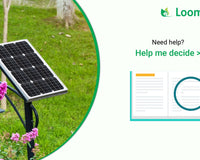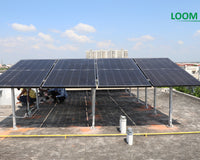Most people living in metro cities face the problem of commuting. They have to travel at least 5-10 km either for professional work or personal work. Due to rising levels of pollution and high cost of fuel, people preferred public or shared transport till date. But due to the recent COVID-19 pandemic, most people prefer to travel alone and if possible in their own vehicle. It is not always economical for people to buy cars or bikes for traveling since these are expensive and require constant maintenance.
Problem
- Due to the COVID-19 situation, people are preferring to travel by their own personal transport, such as two-wheelers, four-wheelers, etc. They do not want to risk exposing themselves to the virus by traveling in closed spaces with strangers.
- The major problem with conventional means of transport is the rising diesel and petrol cost.
- Traveling in shared transport is also not very cheap. You can be charged a fare of Rs. 30 per day approximately for 40 minutes of travel time.
- People are adopting personal vehicles for safety and timing.
Solution

India is making rapid strides in technology and innovation. At this time, India is the third-largest carbon emitter after China and the USA. The USA has already reduced its dependence on the national grid by using renewable energy such as Solar Power, Wind, and Hydro, aggressively wherever possible.
India has been working in solar very aggressively, the government has given subsidy schemes to manufacturers and customers. However, the country now needs pollution-free electric vehicles to further reduce India’s carbon footprint. 2021 will be the beginning of the Electric Vehicle Era. India is a large market for two-wheelers (Electric Cycle, Scotty, three-wheelers (E-Rickshaw), and four-wheelers (Electric Car) and if the technology and pricing are right, could achieve great success in this area.
Here is a table displaying minimum fare in city-commuting on a shared basis:

|
Places |
Distance |
Time |
Fare |
|
Distance Home to Office |
5 to 15 km. |
30 to 40 minutes |
25 – 40 |
|
Distance Home to Market |
1 to 3 km. |
5 to 10 minutes |
5 – 10 |
|
Distance Home to Relative’s Home |
1 to 5 km. |
5 to 15 minutes |
5 – 10 |
|
Distance Home to Park |
1 to 10 km. |
5 to 20 minutes |
10 - 25 |
Other than the fare, another challenge in using shared vehicles is that one has to wait for his partners and adjust according to his time in sharing transport. However, if people are aware of the distance between their regular movements they can easily switch to electric vehicles.
What is the meaning of an Electric Vehicle?

A vehicle that is run through a battery is called an Electric Vehicle. The technology has been promoted worldwide due to its anti-polluting characteristic and green credentials. Its advantages are many. If governments around the world support this technology, it might help the world to fight climate change concerns and fight fossil fuel vehicular emissions.
Benefits of Electric Vehicle:
1. Saving Money of Regular Fare / Diesel / Petrol Cost

Since electric vehicles do not need fuel or gas to power them, a user can escape the steep rise in prices of these commodities. All it needs is to be plugged in and ready to go another 100 miles.
2. Freedom of Petrol Pump

The electric vehicle is easy to recharge. You will no longer need to run the fuel station to get your car recharged before hitting the road! Even a regular household socket could be used for charging an electric car.
3. License (Freedom)

No need for getting a pollution certificate. You have a lifetime free pollution certificate if you own an electric vehicle.
4. Eco-Friendly

The biggest and the best reason to use an electric vehicle is that it is environment-friendly. They do not release vicious gases that lead to air pollution as against conventional vehicles.
5. Quieter, More Efficient, Light Weight

The electric vehicle is easy to recharge. Electric cars cut noise pollution as they have fewer moving parts than a conventional vehicle. An electric car is around three times as efficient as car with an internal combustion engine, according to Wikipedia. It is also light-weight and has a lower center of gravity which makes it much more stable on the road in case of a collision.
Watch this video, to explain content
Demerit
a). Lack of Charging Stations

One of the major advantages of using an EV is the fact that it does not need any petrol or diesel to run. Instead, it just needs a charging station where the vehicle can be plugged and ready to go. However, one of the major challenges that are hindering its adoption is the lack of a sufficient number of charging stations. For example, India has very few EV charging stations. Even if you buy an EV, it will make no sense unless there is a charging station in your vicinity. For promoting an increased adoption of these vehicles, it is first necessary to build an adequate number of charging stations.
Solution: Solar Generator for Electric Vehicle Charging

Solar generator is the complete system of lithium battery, inverter, mppt solar charge controller. The product range of solar generator is 100 Watt Hour to 2000 Watt Hour available in the market. The price of lithium generator is 120 Watt Hour including all costs. Avg. weight of 500 Watt solar generator is about 5-6 kg.
b. Expensive

Buying an electric vehicle is still expensive. There are many fossil fuel cars available in the market at different price points. However, electric vehicles offer lesser options to choose from, and the better ones are highly-priced. It is absolutely necessary for governments to promote the usage of EVs through subsidies and incentives – both to buyers and manufacturers. Even the batteries that are used are still costly, though their prices are estimated to drop in the near future.
c. Lack of Power and Reduced Range

Fossil fuel-based cars offer better acceleration when compared to electric vehicles. Though Tesla and Volkswagen are making EVs with better range, an average electric car can easily run at 100 miles to 200 miles per charge. Hence people are still skeptical about using electric vehicles for long journeys/ highway drives.
Which type of Battery is used in Electric Vehicles?

Three types of batteries are available in the market, such as Lead Acid, VLSR, and Lithium Battery. One of the major advantages of lithium-ion batteries is their light-weight and portability. This feature makes it ideal for usage in electric vehicles. So, Lithium Battery is commonly used in Electric Vehicles. The capacity of Lithium Battery is based on speed and distance and the voltage range of Lithium Battery depends on its motor capability. Lithium batteries are gaining rapid momentum as they are finding increased application in electric vehicles and for power backups in renewable energy systems. It also has high energy density and electrochemical potential and is a low maintenance battery with low self-discharge.
Technical Details
An electric cycle uses a lithium-ion battery and a controller in-built into the battery. It has a speed range of 25km/hour and has a charging time of 4 hours. It also comes with a warranty of 24 months (from the date of purchase) for electronic parts such as batteries, Motor, Controller, Charger Display, Sensor, and Throttle. It has a maximum power of 250W.
Here, we are giving an example of an electric cycle for your better understanding:
|
Components |
Electrical Parameters |
Breakup |
|
Motor |
BLDC 36V/250W,40 Nm, Rear Hub Motor |
Electrical System |
|
Battery |
Li-Ion 36 V,5.8Ah with IP67 protection & 2 years warranty |
|
|
Controller |
36V/250W, Inbuilt in Battery Lower Case |
|
|
Display |
LED on Handle Bar |
|
|
Battery charger |
36V/2A, Input 230V AC |
|
|
Front |
LED Lamp |
Performance |
|
Max Speed |
< 25Kmph |
Range mentioned is as per IDC tested at ARAI with Single Rider. |
|
Max. Power |
< 250W |
|
|
Range/Charge |
~30Km (Pedalec), ~25Km (Throttle) (*with 70 Kg Rider Weight) |
|
|
Charging Time |
~4 Hrs. |
|
|
Electronic parts (Battery, Motor, Controller, Charger Display, Sensor, Throttle) |
24 Months from the date of purchase |
Warranty Coverage |
|
License Required |
Not Required |
|
|
Weight |
15 to 20 kg. |
Electric Cycle Price in India, 2021
The price of an electric cycle starts from Rs. 21,000 to 32,000 in India. It includes gst, and other equipment's such as, mut guard, well, safety key, etc.
And here are the technical specs of Electric Scotty

An electric scotty uses a lithium-ion battery and a controller in-built in battery. It has a speed range of 45km/hour and has a charging time of 4-5 hours. It also comes with a warranty of 24 months (from the date of purchase) for electronic parts such as Battery, Motor, Controller, Charger Display, Sensor, Throttle. It has a maximum power of 250W.
|
Components |
Electrical Parameters |
Breakup |
|
Motor |
BLDC 1200W/1800W Hub Motor |
Electrical System |
|
Battery |
Li-Ion 72 V/26Ah with IP67 protection & 2 years warranty |
|
|
Controller |
36V/250W, Inbuilt in Battery Lower Case |
|
|
Display |
LED on Handle Bar |
|
|
Battery charger |
36V/2A, Input 230V AC |
|
|
Front |
LED Lamp |
Performance |
|
Top Speed |
45km/h |
|
|
Max. Power |
< 250W |
|
|
Range/Charge |
80km** Range mentioned is as per IDC tested at ARAI with Single Rider. |
|
|
Charging Time |
4-5 Hours |
|
|
Electronic parts (Battery, Motor, Controller, Charger Display, Sensor, Throttle) |
24 Months from the date of purchase |
Warranty Coverage |
|
License Required |
Required |
** Range mentioned is at the standard condition of IDC as per the CMVR standards. The practical range may vary around 25% based on road speed, acceleration and braking, battery charge and battery aging, tyre pressure and maintenance of the vehicle, etc.
The role of the solar system in electric vehicle

The use of solar energy to store power for recharging electric vehicles can revolutionize the whole industry and make its adoption faster as currently, we do not have an adequate number of electric charging stations. We can store power through solar panels in battery banks and the national grid through net meters, and then we can charge our electric vehicles. We will be using very less national grid power in our home and we can protect our natural resources too.
Conclusion
The Indian government has woken up to the potential of Electric Vehicles recently and has formed a high-powered committee to increase the adoption of Electric Vehicles in India. The prices of EVs will fall with a decline in battery costs and increasing scale. However, one of the biggest hurdles in driving an Electric Vehicle is the lack of Electric Vehicle Charging stations which are needed to power the car, just as petrol/diesel is needed to fuel normal cars.
If you want to know more about lithium batteries for residential homes, drones, school projects, any movable equipment, you can find it here.












